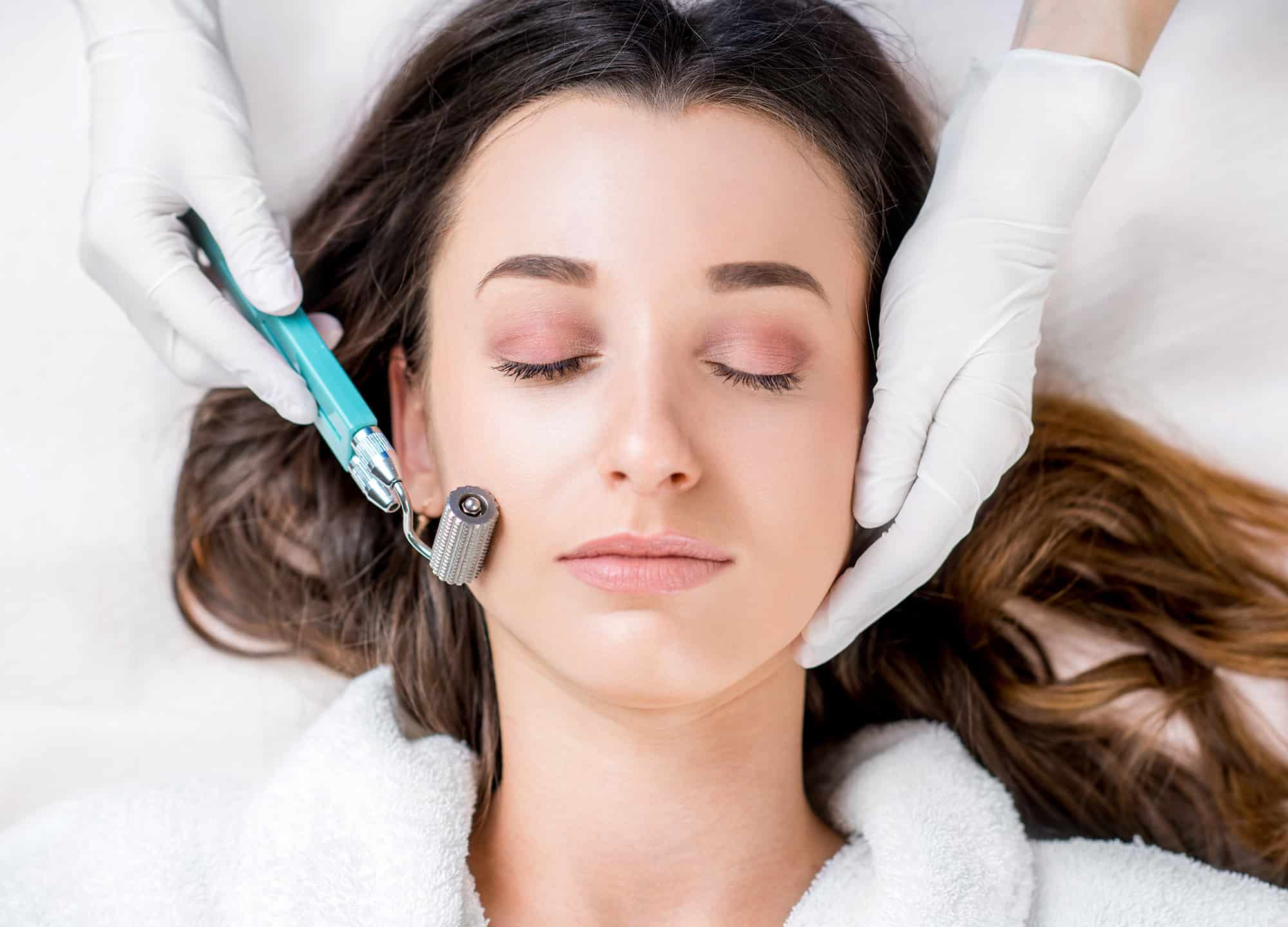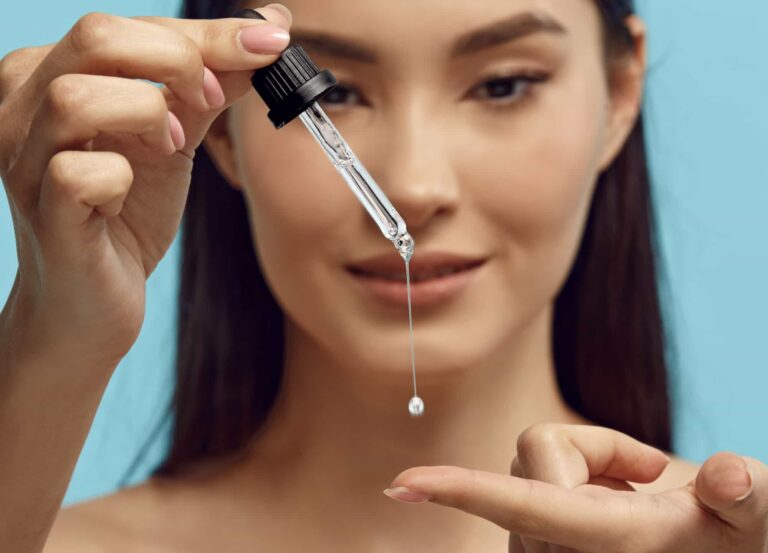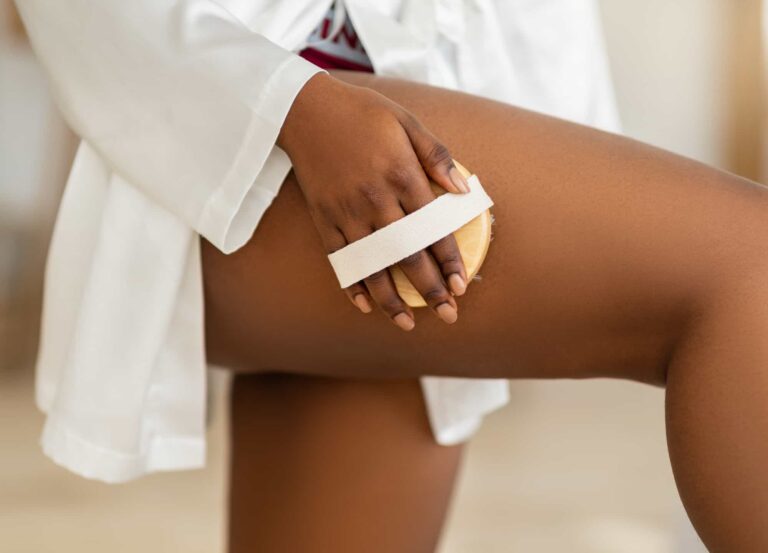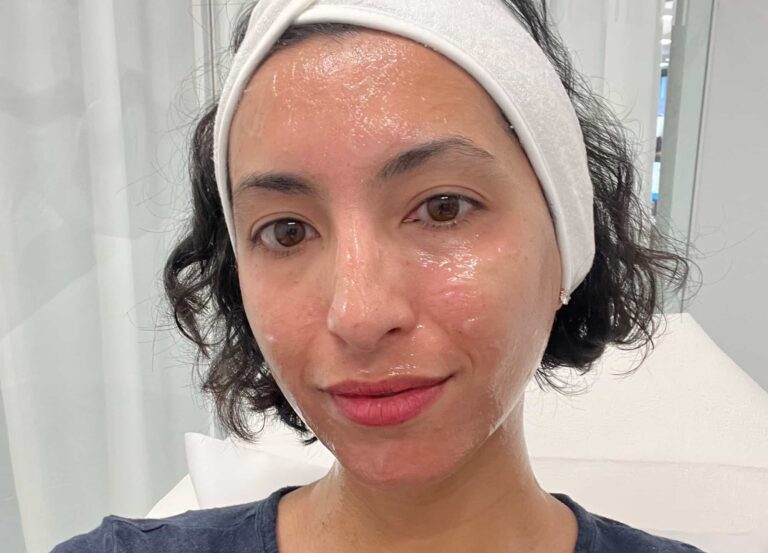Although it might seem counterintuitive, many skin rejuvenation treatments—including microneedling—work by causing microdamages to the skin. When your body senses a wound, it goes into overdrive to repair it, leaving your skin healthier and more vibrant than it was before, reducing the appearance of large pores, and boosting collagen production (which is why it’s known as collagen induction therapy).
A microneedling treatment is exactly what it sounds like. Tiny needles lightly puncture the top layer of your skin. It doesn’t hurt as much as you’d think—you can have a numbing cream applied beforehand—but it can be a bit uncomfortable. Because the skin is being punctured, this cosmetic procedure is best performed in a controlled medical setting, by an experienced doctor or aesthetician.
In addition to being in a sanitary environment, another benefit of having a professional microneedling treatment is that the needles are longer than you’d find in at-home devices, which gives more dramatic results.
Microneedling benefits
Microneedling specifically aims to improve overall skin texture and firmness, explains Dr. Debra Jaliman, a board-certified dermatologist in New York City. “Because the needles are used to create small punctures on the top layer of the skin, it actuates the body to create new collagen and elastin. I’d recommend it to patients to help reduce pore size and to improve the texture and firmness of their skin. Another benefit of microneedling is that it can help reduce the appearance of acne scars [by evening out the skin around the depressions].”
Microneedling can be done anywhere on the body; it can even help improve the appearance of stretch marks. It’s often paired with other cosmetic procedures, such as injectables like filler and Botox, chemical peels, and resurfacing laser treatments—or followed by powerful topicals, such as retinol, hyaluronic acid, and vitamin C, which may better penetrate skin via the microchannels created by the needles.
Dr. Zain Husain, a board-certified dermatologist in Marlboro, New Jersey, adds that when you combine microneedling with platelet-rich plasma (PRP), a substance that’s extracted from your own blood, “the combination restimulates your skin using your body’s own growth factors.” He advises patients do three sessions, one month apart, with the last one being at least two weeks before any event. Skin will look more radiant almost immediately, and you may see tightening and smoothing benefits for weeks afterward.
Related: The 8 Best Foundations That Cover Up Redness After Microneedling
Common microneedling side effects and downtime
As you’d expect, any time you inflict even a small amount of purposeful damage to your skin, you’re going to experience a few side effects. (Even scratching an itch can leave a faint mark.) That being said, microneedling side effects are generally pretty mild and to be expected.
“Redness after microneedling is a common side effect, but this subsides within a few hours. Some discomfort and swelling are also somewhat common, but these side effects don’t happen to all and should also subside within a few hours,” says Dr. Jaliman. “Additionally, after microneedling sessions, your skin is more sun-sensitive because it’s more exposed due to the tiny punctures from the needles. For that reason, it’s important to wear a broad-spectrum mineral sunscreen with an SPF of at least 30.”
Another microneedling side effect is that it can make your skin more sensitive when applying topical products. In the 48 to 72 hours following your microneedling treatment, Dr. Jaliman recommends avoiding products with alcohol (which can cause stinging) and pressing pause on active ingredients, including retinoids, AHAs, and BHAs.
“These ingredients will be too strong right after microneedling is done,” she says. “Instead, use a mild cleanser and hydrating serum and don’t exfoliate or scrub the skin too soon after your treatment.” Make sure you have a gentle, noncomedogenic moisturizer on hand too. Good aftercare can make all the difference in your results.
What are the microneedling risks?
Microneedling is a safe and effective skin-care treatment that’s approved for all skin tones. However, those with eczema, rosacea, active acne, psoriasis, unhealed facial wounds, or very sensitive skin types should avoid microneedling treatments. It’s also not recommended for those prone to keloids, on blood thinners, or for heavy alcohol drinkers.
Because the skin is technically being wounded through small punctures, microneedling treatments should be performed in professional and hyper-sterile settings. There are at-home dermarolling devices you can buy that have smaller needle lengths, but they are not recommended by skin-care professionals because they’re difficult to keep clean, which could inadvertently cause you to push bacteria into your skin, and most people don’t know how much pressure to apply when using these devices.
“Home microneedling devices, including dermarollers and dermapens, can cause scarring and post-inflammatory hyperpigmentation [PIH]. They are user-dependent and not standardized,” warns Dr. Husain. “I would highly recommend having the treatment done in the office of a medical professional, where the motorized microneedling devices are more precise and standardized. When performed by an experienced physician, this treatment is safer and will provide better results.”
How long does it take to see microneedling results?
It can take some time before you start to see microneedling benefits. Dr. Jaliman says that the best results—including improved texture, reduced fine lines, smaller pores, and firmer skin—are typically seen four to six weeks after your treatment. Though it takes time to see these changes, the good news is that these are long-term results that can be maintained with consistent treatments.











